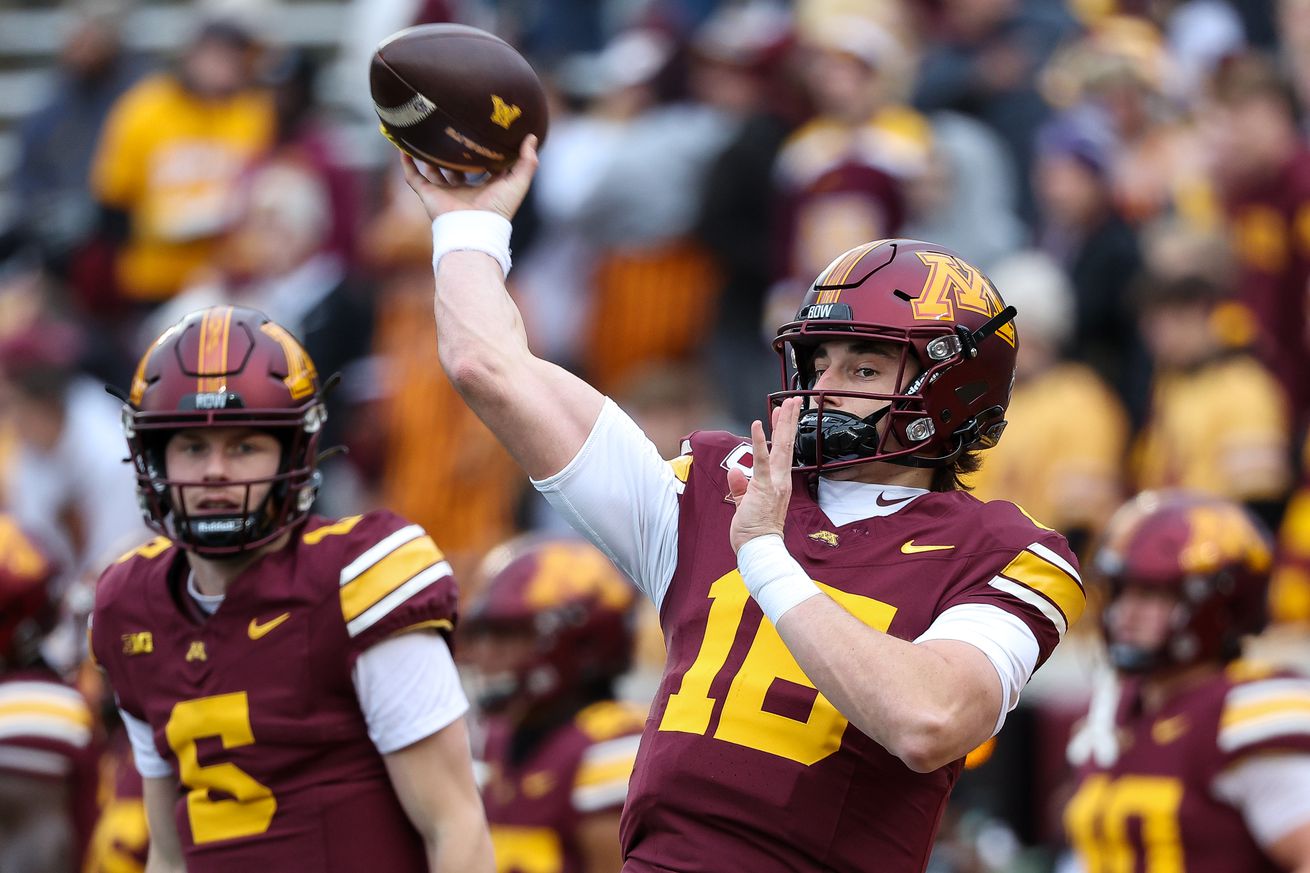
A few UDFAs could once again make the Vikings’ roster
The Minnesota Vikings have been one of the better teams in recent years when it comes to adding future contributors from the ranks of UDFAs and as such it makes sense to take a closer look at the twenty players the Vikings added this year, as at least a few of them stand a decent chance to make the roster. Last year, Bo Richter, Dwight McGlothern, Gabriel Murphy, and Taki Taimani made the Vikings’ roster as UDFAs.
Here is a quick breakdown of each player and how they might make the roster. Lance Zierlein’s scouting reports are linked to the player title where available.
Tyler Batty, OLB, BYU
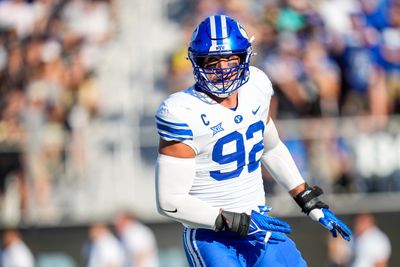
Photo by Ricky Bowden/Icon Sportswire via Getty Images
Batty is a bigger bodied (6’5”, 275-pound) edge rusher – more of a 4-3 base end in size although he played from a 2-point stance at times at BYU. Similar to Tyrion Ingram-Dawkins in possibly having inside-outside versatility although he’s not as athletic as Ingram-Dawkins. It seems that Brian Flores is looking for this body type to complement the smaller and more athletic OLBs currently on the roster.
In addition to being solid in run defense and pass rush at BYU (PFF grades in the mid-70s in both categories), Batty also did well in coverage which adds to his versatile skill set and doubtless was a factor in the Vikings signing him as a UDFA. He could also bring some value as a special teamer that would help him make the roster.
Batty is 26 and will have a tough road to make the roster, given Greenard, Van Ginkel, Dallas Turner, Gabriel Murphy, Tyrion Ingram-Dawkins, and Bo Richter are already on the roster. But Batty brings a solid resume as a UDFA and could potential make the roster at the back end of the depth chart if he also proves to be a solid contributor on special teams. Here is his highlight reel.
Silas Bolden, WR, Texas
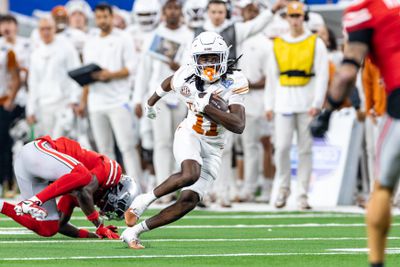
Photo by Matthew Visinsky/Icon Sportswire via Getty Images
At 5’7”, 162 pounds the only way he makes the roster is as the punt returner at the bottom of the WR depth chart. But he’s a dangerous punt returner. He ran a 4.38” 40 at his pro day- which looks like his play speed. Fun highlight reel.
Max Brosmer, QB, Minnesota
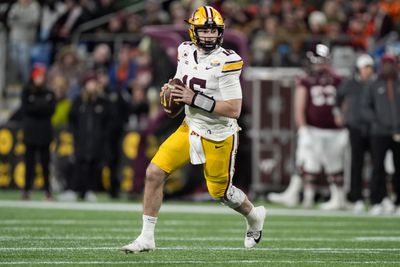
Jim Dedmon-Imagn Images
Brosmer doesn’t have any special physical talent to distinguish himself at quarterback, which is why he went undrafted, but he’s able to play within his abilities and avoid negative plays. As a result, he grades very well according to PFF, with one of the lowest turnover-worthy play rates in the FBS last season and highest adjusted completion percentages. He also managed about one big-time throw per game with the Gophers. Ultimately if the team is down to QB3, all you can reasonably expect is what Brosmer has to offer.
Brosmer should be able to displace Brett Rypien as QB3- it would be disappointing if he didn’t- but ultimately Brosmer is competing against other backup QBs that get cut at the end of August for a roster spot. Could also make the practice squad. His highlight reel.
Logan Brown, OT, Kansas
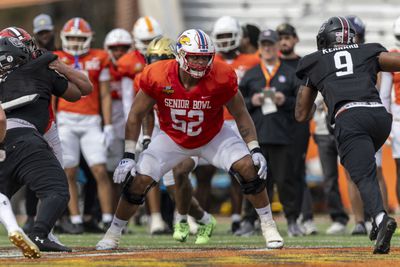
Vasha Hunt-Imagn Images
Brown is an interesting story. He was a five-star recruit and fourth-highest tackle recruit in the 2019 college recruiting class (after Evan Neal, Darnell Wright, and Kenyon Green- all of whom were first-round picks in the 2022/23 drafts) with offers from Alabama, Michigan, Ohio State, Penn State, and Wisconsin. He chose Wisconsin but didn’t play much his first few seasons due to injuries and Covid, then was dismissed from the program in October, 2022 for hitting another player. He entered the transfer portal and went to Kansas, where he only played 9 snaps in 2023 before becoming the starter in 2024 at right tackle (he had played left tackle previously) and had an excellent season with an 82.5 overall PFF grade and allowed just 6 hurries all season in pass pro. He just turned 24.
Brown has prototypical size and athleticism for the position (9.45 RAS) to go with his great PFF grades for the 2024 season at Kansas, which suggests he’ll compete for a roster spot as a swing tackle if he can show the character and drive to rebound from what was a major detour in his career path at Wisconsin. His scouting reports suggest a work in progress, with limited experience showing up on tape along with inconsistent technique and upright pad level. His highlight reel.
Chaz Chambliss, OLB, Georgia
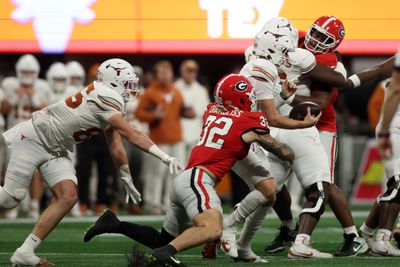
Brett Davis-Imagn Images
Chambliss is similar to Gabriel Murphy and Bo Richter in size and athleticism- lacking the desired length for an edge rusher in the NFL but nevertheless grading well in college at the position. Chambliss also showed good coverage ability last season at Georgia (77.9 PFF grade). He seemed to recognize that his path to making an NFL roster lies in his versatility and ability to be a hybrid inside-outside linebacker. At his pro day, he said he wanted to show scouts how well he could drop in coverage, for example. He also said Andrew Van Ginkel was a player he watches and learns from.
Chambliss’ highest grades last year were in run defense (80.9), tackling (84.8) and coverage (77.9), so his best path to making the Vikings roster may well be as primarily an inside linebacker. He was also a core special teamer for the Bulldogs last season, which could also help him make the roster. The Vikings could really use an inside linebacker who can cover well while still being an asset in run defense. His best shot to make the roster is likely at the back end of the inside linebacker depth chart and core special teamer. His highlight reel.
Oscar Chapman, P, Auburn (International Player Pathway Program)
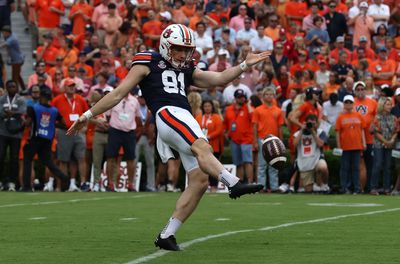
John Reed-Imagn Images
Chapman is one of four Auburn players the Vikings signed as UDFAs. He wasn’t really scouted much judging by the dearth of draft profile info on him online, but he was a remarkably consistent punter with 4+ second hangtime and 40+ yard net punts, which are the lines you need to be over to make a roster as a punter in the NFL. He also put 38% of his punts over his five years at Auburn inside the 20-yard line, and just 17.6% of his punts were returned, leading to a gross vs. net punt yardage differential of just 2.2 yards over his career at Auburn. He also never had a punt blocked.
In short, he was a very predictable and drama-less punter. Chapman is a native of Australia, so he qualifies for the IPP program, which means he doesn’t count against the roster (or later practice squad) limit.
Chapman will compete against Ryan Wright, whose hangtime and distance numbers are notably better than Chapman’s, although his net punt yardage is only a yard better than Chapman’s at Auburn. Wright also has a higher percentage of his punts inside the 20. The main issue with Wright is that he has been inconsistent at times, although he bounced back last season from a sophomore slump this season prior.
Overall, I wouldn’t give Chapman much of a chance to make the roster, but providing competition for Wright may help his focus and provide some motivation for him to up his game. Wright is on a one-year deal.
Zeke Correll, OL, N.C. State
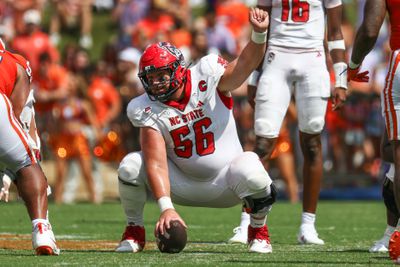
Photo by Isaiah Vazquez/Getty Images
The Vikings give a shot to another short-armed NC State center (although Correll spent his first four years at Notre Dame). Correll up’d his game at NC State last season (72.7 overall PFF grade) but his 5.25 RAS is underwhelming and I’m not sure he’ll be able to displace Michael Jurgens as a backup center. I would imagine the Vikings may be active in adding a veteran backup here as well.
Dontae Fleming, WR, Tulane
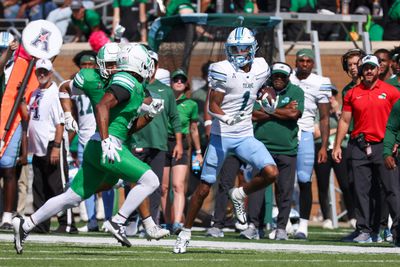
Photo by George Walker/Icon Sportswire via Getty Images
Fleming is another small (167 pound) WR that could compete as a punt returner but wasn’t as impressive as Bolden (above) as either a punt returner or receiver.
Keenan Garber, CB, Kansas State
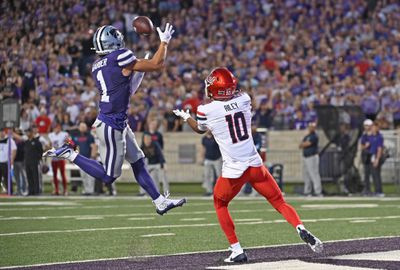
Photo by Peter Aiken/Getty Images
Garber has good traits for the position (9.67 RAS) but took a step back in coverage his senior year compared to his junior year at Kansas State. Overall middling grades in coverage and overall as a defender. Garber also has experience on special teams that could help his chances to make the roster.
Joe Huber, OL, Wisconsin
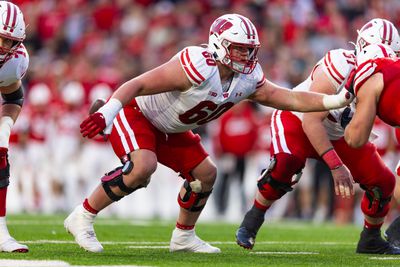
Photo by Nathanial George/Icon Sportswire via Getty Images
Huber was a solid offensive lineman who played a season at right guard and a season at left guard at Wisconsin, and one at right tackle at Cincinnati. He’s had snaps at left tackle and center to round out his complete offensive line experience. Huber doesn’t have the length or athleticism to play tackle in the league, but he could a three-position interior line backup.
Huber’s PFF grades averaged in the 70s over his three seasons as a collegiate starter and he has an 8.93 RAS, although he doesn’t have a real distinguishing element to his game. His does not to add strength and clean up some sloppiness in his technique, particularly getting off-balance/lunging late in reps that can result in him losing the block and finishing on the ground. Still, Huber has enough to work with to develop into a solid interior backup. Here is a decent draft profile of Huber.
It’ll be tough for Huber to make the roster, but not impossible. Practice squad is more likely.
Austin Keys, LB, Auburn
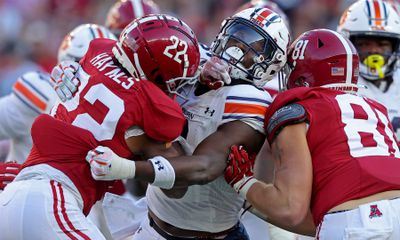
Photo by Jason Clark/Getty Images
Keys has a good athletic profile for inside linebacker (9.01 RAS) and was effective (but not elite) in coverage and as a blitzer in addition to being good in run defense. He was also good on special teams on the kick coverage unit. Those are all qualities that could land him a roster spot if he makes the most of the off-season program, training camp and preseason game reps. One of the main weaknesses the Vikings have on defense is a linebacker that can cover well. Blake Cashman has been good but declined in his coverage grade last season.
Keys won’t threaten Cashman’s starting job, but he could make the backend of the linebacker depth chart if he proves to be a well-rounded modern linebacker who can contribute on special teams.
Robert Lewis, WR, Auburn
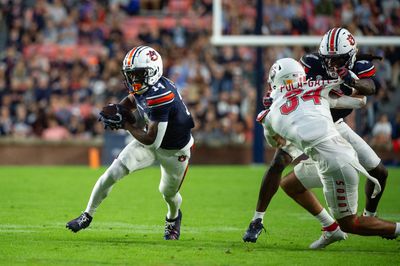
Photo by Michael Chang/Getty Images
There isn’t much in Lewis’ collegiate stats that suggests a realistic path to make the roster. He’s 5’10”, 188 pounds, 4.46” 40 at his pro day, with receiving stats that don’t stand out. He spent four years at Georgia State before transferring to Auburn for a fifth season where he was an ancillary slot receiver with 0.81 Y/RR and didn’t play special teams. He had eight kick returns his senior year at Georgia State with a 21-yard average and long of 26 yards. He didn’t return punts.
His best year as a receiver was his senior year at Georgia State where he was a focal point of their offense and had 70 receptions on 103 targets for 877 yards (2.50 Y/RR) and was used primarily outside but in the slot too. His 2023 Georgia State highlight reel. He seems to be a decent route runner- lots of hitch routes- but nothing outstanding.
Overall, not sure what the appeal is here. The Vikings’ WR depth chart isn’t easy to make, especially if you don’t offer much on special teams. Difficult to see a path for him to make the roster.
Dorian Mausi, LB, Auburn
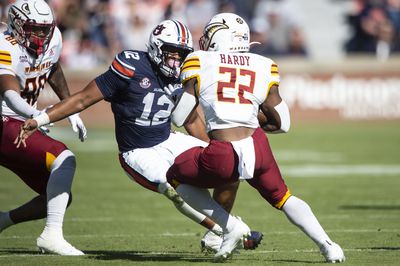
Photo by Michael Chang/Getty Images
Mausi got steadily better after four years at Duke and a fifth year at Auburn, rising to an overall PFF grade just over 70 last season. He has a mediocre 5.80 RAS, however, and doesn’t really stand out in any way, including on special teams. Tough to see him winning a depth spot at linebacker against more distinguished competitors.
Bryson Nesbit, TE, North Carolina
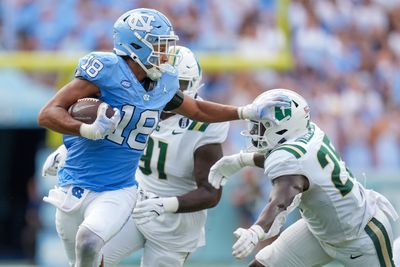
Photo by Grant Halverson/Getty Images
Nesbit is a smaller (235 pound) tight end with poor athletic traits (3.16 RAS) including a 4.88” 40 time, but who nevertheless put up some respectable receiving stats at North Carolina- 2.02 Y/RR over four years with the Tarheels- although that stat declined each year, ending at 1.50 Y/RR last season. He looks like a big wide receiver and was used that way- as a big slot receiver 80% of the time his last two seasons. His 2024 highlight reel. He has special teams experience but not a standout there either.
Given Nesbit’s use in college and generally poor blocking ability and size, the Vikings may look at him as more of a big slot receiver than a tight end. But whatever the position the Vikings may assign to him, his traits are not a good recipe for making the roster.
Mishael Powell, S, Miami
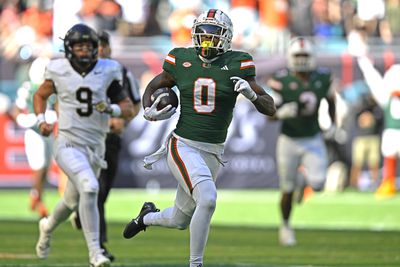
Photo by Samuel Lewis/Icon Sportswire via Getty Images
Powell spent three years at Washington before transferring to Miami for his senior year. He showed good ball skills- capitalizing on some errant throws, jumping a couple routes, and even a pick-six on a blitz, but his 4.74” 40 time at his pro day is tough to get around. His play speed seems a little better than that, but nevertheless his speed is a liability at safety in the league- it’s even slow for a linebacker. Powell had below average grades in run defense and tackling as well, so that makes it very tough to his getting a roster spot. His 2024 highlight reel.
Myles Price, WR, Indiana
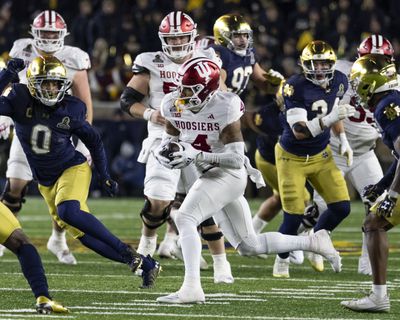
Photo by Steve Limentani/ISI Photos/Getty Images
Price may have the best chance among the UDFA wide receivers to make the roster, primarily as a punt returner. He’s also small- 5’8”, 178 pounds- but not as small as Silas Bolden. He has 4.41” speed which is right there with Bolden at 4.38” as well.
Price had a total of 44 punt returns over his collegiate career (four years at Texas Tech, one at Indiana) including 23 last season, with a 13-yard return average. Last season his 12.6 average was third-best in the FBS among punt returners with at least 20 returns. Silas Bolden was up there with a 10.5-yard average, but also 3 muffs.
Price may have some value as a backup slot receiver as well, having put together a good season at Indiana with a 2.39 Y/RR stat and a 79.6 overall PFF grade. He had 38 receptions on 49 targets for 466 yards (12.3 yard average) with a 6.5 YAC average. His highlight reel.
Overall, it looks like it could be a competition between Silas Bolden and Price to replace Brandon Powell as punt returner at the bottom of the WR depth chart.
Tre Stewart, RB, Jacksonville State
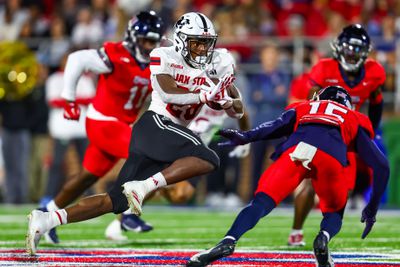
Photo by David Jensen/Getty Images
Stewart is the only running back not named Ashton Jeanty with 1,600+ rushing yards and 25+ touchdowns last season in college football. He was at D-II Limestone State before transferring to Jacksonville State for his last year.
He’s a smaller back at 5’10”, 192 pounds, but he dominated in the FCS last season. Good speed at 4.5”. Still, while Stewart is a good one cut zone runner who can get skinny through creases, it’s unclear how well his production will translate from FCS into the league. He’s not as powerful or elusive as his stats suggest if you look at his tape and gauge it to the NFL, which is probably why he went undrafted. His highlight reel.
Oveall, I don’t think Steward offers anything above Ty Chandler, who also has more size and speed (4.38”) or Cam Akers if the Vikings choose to bring him back. Tough path for Stewart to a roster spot.
Zemaiah Vaughn, CB, Utah
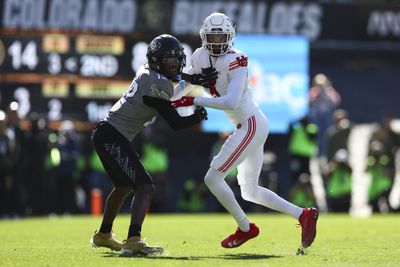
Photo by Aaron M. Sprecher/Getty Images
Vaughn has good height (6’2”) and speed (4.45”) but is light (186 pounds) for his height with long legs. Overall 8.48 RAS. But his long legs makes it difficult for him to stick with receivers on breaks in man coverage. Still, he’s very good in contested catch situations, taking advantage of his height and length, with good ball skills. Similar type of cornerback as Khyree Jackson, but a bit smaller and not as strong. Brian Flores has been looking to add a bigger corner who can body-up with bigger receivers. Vaughn may have the height, but not the weight and strength at this point. He has the frame to bulk up some and could prove to be a good Cover 3 corner. He has a chance to make the bottom of the CB depth chart. His highlight reel.
Alex Williams, DL, Middle Tennessee State
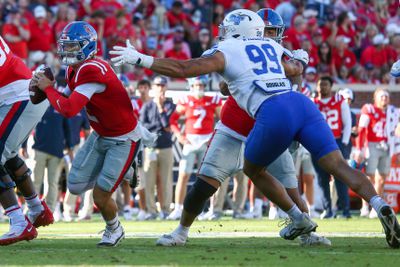
Petre Thomas-Imagn Images
Alex Williams is a monster of a man at 6’7”, 315 pounds, 34 3/4” arms, and 11” hands. He’s listed as a defensive end, but I’m guessing the Vikings will try him inside at defensive tackle. There isn’t much out there on Williams, and he injured his Achilles last October. However, he apparently was able to do a broad jump and vertical jump at his pro day on March 20th.
Williams was a three-star recruit who signed with Ohio State and redshirted in 2018. He played 65 snaps in 2019 and then transferred to Vanderbilt. He didn’t play in 2020 but had 174 snaps in 2021. He did not play in 2022 but completed his degree. He was out of football in 2023 but went to Middle Tennessee State in 2024 where he started and played 193 snaps before injuring his Achilles. At Middle Tennessee State he was an inside-outside defensive linemen, with reps split between the B gap, over tackle and outside. He also appears to have added weight- he was listed at 291 at Middle Tennessee State but tipped the scales at 315 at his pro day.
Obviously a traits-based signing with the hope that he could develop into a roster spot worthy player. My guess is that would be at defensive tackle. If he could impress coaches in the off-season program, he could land a spot on the practice squad.
Ben Yurosek, TE, Georgia
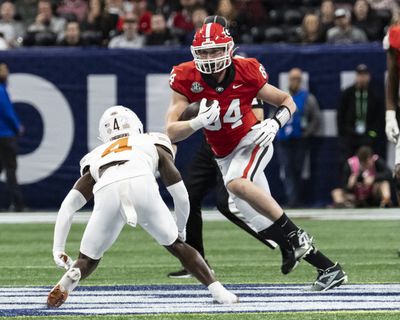
Photo by Steve Limentani/ISI Photos/Getty Images
Yurosek spent four years at Stanford as a receiving tight end who was used more as a blocking tight end over time before transferring to Georgia where he was used more as a blocking tight end. His blocking grades have improved over the past three years but are still only average according to PFF.
He has good speed for a tight end (4.64” 40), and an overall 8.01 RAS. Overall, Yurosek (u-ROSS-ek) has shown enough as both a blocker and receiver where he stands a chance to win a roster spot at the bottom of the TE depth chart, although in addition to Gavin Bartholomew, he’ll be competing against any available veteran tight ends the Vikings may choose to sign between now and the end of training camp. His highlight reel at Stanford and his targets last season at Georgia.
Who Is Most Likely to Make the Vikings’ Roster?
It’s always difficult to predict who will make the Vikings roster and who won’t among UDFAs- most don’t of course- but some have easier paths than others and the same is true of their background in college football.
That said, I would think either Silas Bolden or Myles Price could make the last spot on the WR depth chart as punt returner, assuming the Vikings don’t bring back Brandon Powell or another vet to compete for the job, and even then one of them may beat out the competition for that role. I lean toward Myles Price, simply because Bolden is so small you wonder about his durability and ball security.
One of the linebackers- most likely either Austin Keys or Chaz Chambliss- could make the last spot on the inside linebacker depth chart but that’s far from certain. Blake Cashman, Ivan Pace Jr., Eric Wilson, and Brian Asamoah II are ahead of them and Asamoah was one of the best core special teamers last season. Wilson has $2 million guaranteed on his one-year deal and is an experienced vet and good special teamer. And then there is sixth-round pick Kobe King too. My guess is that both Ivan Pace and Brian Asamoah are not secure in their spots on the depth chart and could be displaced.
Tyler Batty also has a chance to make the bottom of the edge rusher depth chart as a bigger bodied defensive end with some inside-outside versatility, but no certainty there. Batty is already 26 and both Bo Richter and Gabe Murphy played reasonably well with the snaps they had last season, and Richter was a good core special teamer too. Still, Batty is a different body type that Brian Flores may be looking to add, so if he can prove himself he’s got a shot to make the roster.
The two offensive linemen that played at Wisconsin- Joe Huber and Logan Brown- also have a shot to make the backend of the OL roster. Brown would most likely be competing against Justin Skule and Walter Rouse for a backup spot, while Huber would compete with Henry Byrd. The Vikings could add vets to compete for backup spots as well, which would make it more difficult to gain a roster spot. I would not be at all surprised if the Vikings brought back C/G Dan Feeney, as the Vikings don’t have a veteran backup at center.
I would think Max Brosmer would beat out Brett Rypien. Whether that is for a roster spot or practice squad remains to be seen, depending on if there is a compelling backup that gets cut from another team.
The path for a tight end to make the roster is an easier one at the moment and I would think either Gavin Bartholomew or Ben Yurosek could win a roster spot. But I would not be surprised for the Vikings to add a veteran tight end at some point before the season starts.
Overall, I’m guessing maybe two or three UDFAs make the roster this season, but it could also be zero if the Vikings aren’t happy with their performance and opt to sign or retain vets. I do expect several to make the practice squad. That’s not to say the Vikings didn’t add some decent players in college free agency, it’s just that the bottom of the Vikings’ roster is tougher to make than it once was.